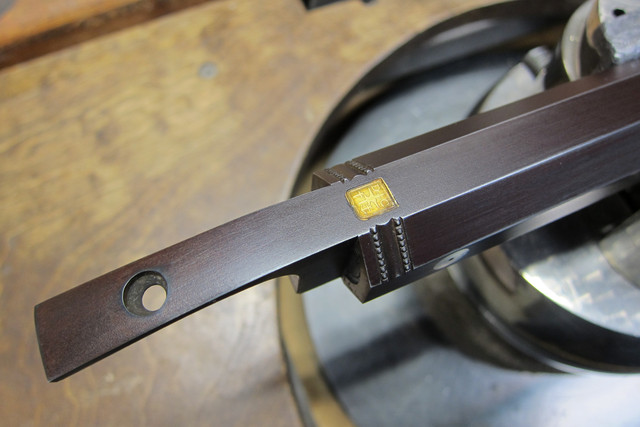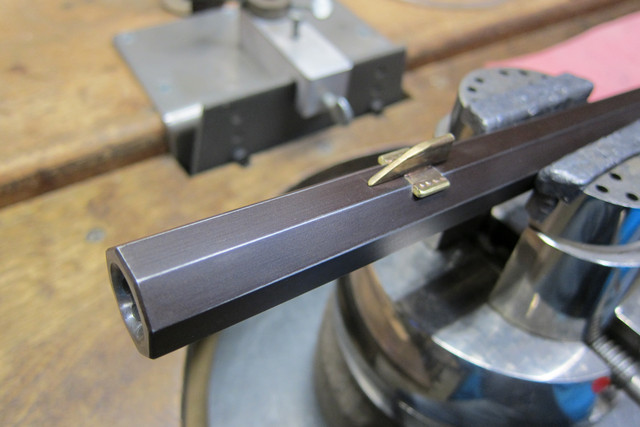Crow-Feather
32 Cal.
I am in awe of your abilities. Not much else to say except that you are a true artist.

Beautiful work. Can you or will you elaborate more on your process for coloring the barrel and other metal components?





David,Hi,
What could be better than a Kibler design with Crisalli details!
dave
fjrdoc,
As far as the barrel finish goes, I have been experimenting some with the last several rifles I have built. I wasn't looking for a "dark grey" patina, but not a brown and not a blue...I'm not quite sure what I came up with, but I like it....so far. Here are some variations on the same theme on 3 different rifles.....





The process is as follows: I start a rust brown exactly as I would for a plumb brown finish. I use a damp box and do one, two, or three, rust cycles of Laurel Mountain Forge Barrel Brown carding with a brass wire tooth brush each cycle. The number of cycles depends on if I want the final finish more grey / blue or more bronze / brown. Once I have a couple of brown cycles on it, I handle the barrel with latex gloves. I take the barrel and put it on the bench. I cover the bench top with a plastic trash bag taped down. Now I scrub the barrel with a small, maroon ScotchBrite pad (2" x2") soaked in one of the cold blue solutions (Oxpho-Blue, Dicropan T-4, Historic House Parts Brass Ager) until I get the barrel to look like I want it. If you only give it two browning passes and do not dwell too long with the cold blue, the barrel comes out with a slight golden tone. More browning passes and not much ScotchBrite rubbing and it comes out a little more brown. Rub it a little more with the cold blue, and it takes on a darker, bluer tone. I did one where I subsequently rubbed all the finish off the edges with a dry ScotchBrite pad, and that looks OK too (a little more "worn") but I figure use and handling will take care of that fast enough anyway.
Hope this helps
PS The brass is just polished and then darkened with Historic House Parts Brass Ager (Brass Darkening Solution - 8 oz.). Then rub it back a little with fine Scotch Brite.
Outstanding work as always. Mayne I missed it as I drooled over the photos, what caliber is she? Any other particulars, weight, l.o.p., barrel length?
Those last photos were what I was waiting for, I was starting to think everything came out much darker than what I was really starting to like in some earlier photos.
This is an outstanding rifle. Thank you very much for sharing.
She looks trim and lean, must be a "body mass index," thing with that extra steel in the barrel, lol.Brokennock,
The rifle is .50 caliber with a 42 inch barrel. As a consequence, in the as finished condition (and with a set of my "gunner's mate" tools in the patch box) the rifle is a little on the heavy side at 9 pounds 10 ounces.
Enter your email address to join: